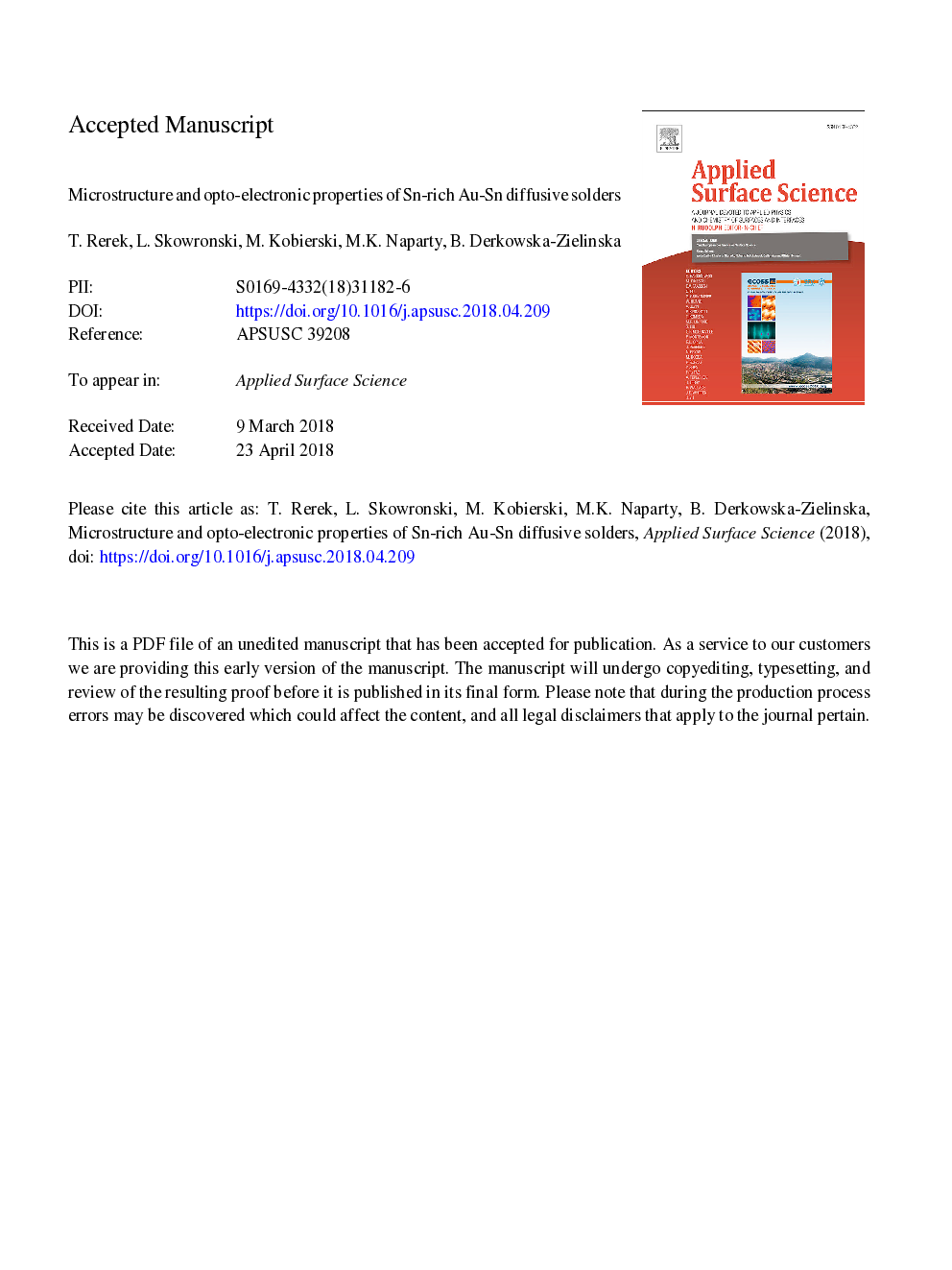| Article ID | Journal | Published Year | Pages | File Type |
|---|---|---|---|---|
| 7833404 | Applied Surface Science | 2018 | 22 Pages |
Abstract
Microstructural and opto-electronic properties of Au⧹Sn and Sn⧹Au bilayers, obtained by sequential evaporating of metals on the Si substrate, were investigated by means of atomic force microscopy, X-ray diffraction and spectroscopic ellipsometry. Thicknesses of individual films were established to obtain the atomic ratio of Au:Sn atoms 1:1, 1:2 and 1:4, which were favor the formation of AuSn, AuSn2 and AuSn4, respectively. However, the produced intermatallic compounds were detected as AuSn and AuSn2. Additionally, the unbounded Sn was found. The sequence of deposition of Au and Sn films as well as their thickness strongly affect on the composition, microstructure, optical and electrical properties of the produced layers. The Au⧹Sn (Sn on the top) layers were more smooth than Sn⧹Au (Au on the top) films. Generally, the Au⧹Sn layers exhibit a better electrical and optical properties than Sn⧹Au films. The optical parameters: plasma energy, free-carrier damping, mean relaxation time of conduction electrons and optical resistivity were determined from the effective complex dielectric function of the formed Au, Sn and Au-Sn films. The optical resistivity values are in the range from 17.8â¯Î¼Î©â¯cm to 85.1â¯Î¼Î©â¯cm and from 29.6â¯Î¼Î©â¯cm to 113.3â¯Î¼Î©â¯cm for Au⧹Sn and Sn⧹Au layers, respectively.
Related Topics
Physical Sciences and Engineering
Chemistry
Physical and Theoretical Chemistry
Authors
T. Rerek, L. Skowronski, M. Kobierski, M.K. Naparty, B. Derkowska-Zielinska,
